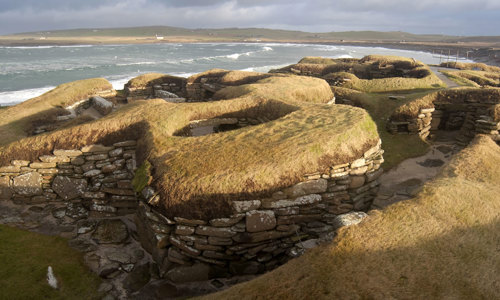History
It’s not easy to put a date on a church as plain as the chapel of St Mary at Crosskirk, but it was probably built in the 1100s. It is arguably the oldest ecclesiastical building in Caithness.
The Norse controlled Orkney and Shetland from the AD 800s, and they also ruled part of Scotland’s northern mainland for a while. By the 1100s the people of Caithness acknowledged the nominal authority of the Scottish Crown.
St Mary’s Chapel resembles contemporary Orcadian and Scandinavian churches more than it does other Highland churches. Like the Norse chapel of St Mary on Wyre, it has possesses a nave and separate square-ended chancel.
The church was originally entered from the west end through a door, the sides of which taper towards the top – a feature also found in early Irish churches. The chancel was also entered through an arch with tapering jambs.
Window to the past
There is no known evidence of an early Christian church at St Mary’s, but a Pictish symbol stone is said to have been found in the area, and excavations here recovered two long burial cists.
It is clear this area was inhabited long before the chapel was built. Between the church and the cliff edge to the north was an Iron Age broch, which has largely been lost to the sea. There are probably more Iron Age remains under the church.
The site may have had spiritual significance from an early date. About 300m south of the church is a holy spring known as St Mary’s Well.

















